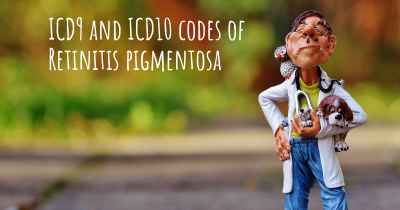18
What is the prevalence of Retinitis pigmentosa?
How many people does Retinitis pigmentosa affect? Does it have the same prevalence in men and women? And in the different countries?

Retinitis Pigmentosa is the leading cause of inherited blindness, with approximately 1/4,000 individuals experiencing the non-syndromic form of their disease within their lifetime. It is estimated that 1.5 million people worldwide are currently affected. Early onset RP occurs within the first few years of life and is typically associated with syndromic disease forms, while late onset RP emerges from early to mid adulthood.
Autosomal dominant and recessive forms of Retinitis Pigmentosa affect both male and female populations equally; however, the less frequent X-linked form of the disease affects male recipients of the X-linked mutation, while females usually remain unaffected carriers of the RP trait. The X-linked forms of the disease are considered severe, and typically lead to complete blindness during later stages. In rare occasions, a dominant form of the X-linked gene mutation will affect both males and females equally.
Due to the genetic inheritance patterns of RP, many isolate populations exhibit higher disease frequencies or increased prevalence of a specific RP mutation. Pre-existing or emerging mutations that contribute to rod photoreceptor degeneration in Retinitis Pigmentosa are passed down through familial lines; thus, allowing certain RP cases to be concentrated to specific geographical regions with an ancestral history of the disease. Several hereditary studies have been performed to determine the varying prevalence rates in Maine (USA), Birmingham (England), Switzerland (affects 1/7000), Denmark (affects 1/2500), and Norway. Navajo Indians display an elevated rate of RP inheritance as well, which is estimated as affecting 1 in 1878 individuals. Despite the increased frequency of RP within specific familial lines, the disease is considered non-discriminatory and tends to equally affect all world populations.
Autosomal dominant and recessive forms of Retinitis Pigmentosa affect both male and female populations equally; however, the less frequent X-linked form of the disease affects male recipients of the X-linked mutation, while females usually remain unaffected carriers of the RP trait. The X-linked forms of the disease are considered severe, and typically lead to complete blindness during later stages. In rare occasions, a dominant form of the X-linked gene mutation will affect both males and females equally.
Due to the genetic inheritance patterns of RP, many isolate populations exhibit higher disease frequencies or increased prevalence of a specific RP mutation. Pre-existing or emerging mutations that contribute to rod photoreceptor degeneration in Retinitis Pigmentosa are passed down through familial lines; thus, allowing certain RP cases to be concentrated to specific geographical regions with an ancestral history of the disease. Several hereditary studies have been performed to determine the varying prevalence rates in Maine (USA), Birmingham (England), Switzerland (affects 1/7000), Denmark (affects 1/2500), and Norway. Navajo Indians display an elevated rate of RP inheritance as well, which is estimated as affecting 1 in 1878 individuals. Despite the increased frequency of RP within specific familial lines, the disease is considered non-discriminatory and tends to equally affect all world populations.
Posted Jul 24, 2017 by Filip 2150
APPROXIMATELY 1 IN 4000 PEOPLE IN THE WORLD ARE DIAGNOSED WITH RP
Posted Jan 13, 2018 by Anders 2500








